
Cleveland's Housing Market in 2024: Trends, Prices, and Investment Opportunities
Explore Cleveland's housing market trends in 2024, including rising prices, investment opportunities, and the impact of urban revitalization on real estate.
ECONOMIC TRENDSCLEVELANDCUYAHOGA COUNTY
George
8/17/20249 min read
As we move through 2024, Cleveland, Ohio's housing market continues to be a focal point for both local buyers and out-of-state investors. Known for its relative affordability compared to other major U.S. cities, Cleveland’s real estate market is evolving, with steady price increases and significant investment potential in key neighborhoods. Understanding these trends is crucial for buyers, sellers, and investors looking to navigate the market effectively.
Cleveland's Housing Market in 2024: Trends, Prices, and Investment Opportunities


Key Takeaways
Cleveland’s housing market in 2024 remains relatively affordable, especially when compared to national averages. However, the city is experiencing steady price increases, particularly in neighborhoods undergoing revitalization. These areas offer significant investment opportunities, whether you’re looking to buy, rent, or flip properties. As demand continues to grow, Cleveland’s real estate market presents a promising landscape for both new and seasoned investors.
Current State of Cleveland's Housing Market
In 2024, Cleveland’s housing market is characterized by its affordability, with the median home price standing at approximately $128,000. This is significantly lower than the national median, which exceeds $338,000, making Cleveland an attractive option for first-time buyers and investors alike. Despite the city’s reputation for affordability, housing prices in Cleveland have been on the rise, driven by increased demand and ongoing economic development.
The affordability of Cleveland’s housing market is partly due to the city's economic and demographic changes. As Cleveland continues to recover from decades of industrial decline, the local economy is diversifying, with growth in healthcare, education, and technology sectors. These changes have brought new residents to the city, particularly young professionals and families, further fueling demand for housing.
While Cleveland remains one of the more affordable large cities in the U.S., the steady increase in home prices is a trend to watch. This rise reflects both the economic revitalization of the city and the broader national trend of rising home prices. For buyers and investors, understanding the current market conditions is essential to making informed decisions in 2024.
Current State of Cleveland's Housing Market
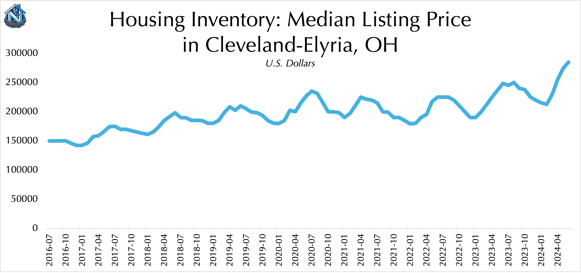

Market Competitiveness
The competitiveness of Cleveland’s housing market has also intensified in 2024. Homes are selling faster than in previous years, with the average property spending only 29 days on the market before being sold. This quick turnaround indicates a high level of demand, particularly in sought-after neighborhoods.
Additionally, approximately 30.5% of homes in Cleveland are selling above the asking price, a clear sign of a competitive market. This trend is most pronounced in neighborhoods that have seen recent investment and revitalization efforts, such as Ohio City, Tremont, and Detroit-Shoreway. For buyers, this means that acting quickly and being prepared to offer above the asking price may be necessary to secure a home in these high-demand areas.
For investors, the competitive market presents both challenges and opportunities. The fast-paced environment can make it difficult to find undervalued properties, but it also signals strong potential for property appreciation, particularly in areas that are undergoing significant development. Understanding the nuances of Cleveland’s market competitiveness is key for anyone looking to invest in 2024.
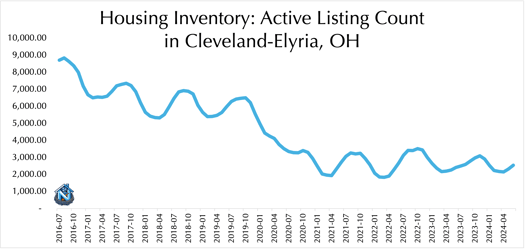

Regional Variations in Housing Prices
Cleveland’s housing market is not uniform; there are significant regional variations in home prices depending on the neighborhood. In general, urban areas close to downtown, such as Ohio City and University Circle, tend to have higher prices due to their proximity to amenities and employment centers. These neighborhoods have seen substantial price increases in recent years, driven by urban revitalization and the influx of new residents.
Suburban areas like Shaker Heights and Lakewood offer a mix of affordability and desirability, with prices ranging from $150,000 to $400,000. These suburbs are popular among families and professionals who seek a balance between urban convenience and suburban tranquility. The ongoing development in these areas continues to drive demand, leading to steady price appreciation.
In contrast, neighborhoods that are still in the early stages of revitalization, such as Glenville and Clark-Fulton, offer lower prices but significant potential for future appreciation. These areas are attracting investors looking for properties with high potential returns, especially as city-led development projects begin to take shape. For both buyers and investors, understanding these regional variations is crucial when considering where to purchase property in Cleveland.
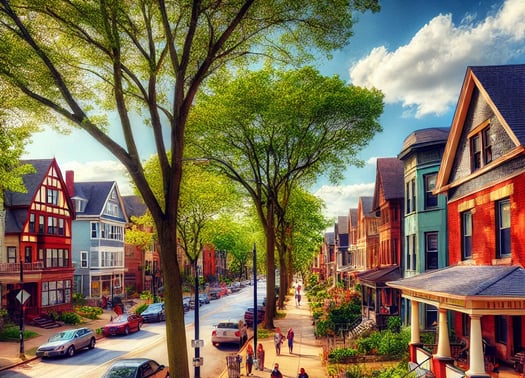



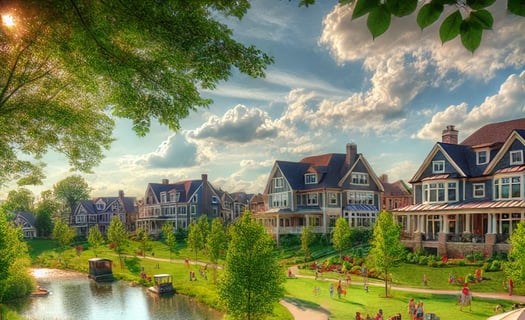



Emerging Neighborhoods with Investment Potential
Several neighborhoods in Cleveland are emerging as hotspots for real estate investment, thanks to ongoing urban revitalization efforts. Ohio City, Tremont, and Detroit-Shoreway are at the forefront of this trend, offering a unique blend of historic charm and modern amenities that appeal to both residents and investors.
Ohio City, with its vibrant arts scene and proximity to downtown, has become one of Cleveland’s most desirable neighborhoods. The area’s revitalization has led to significant increases in property values, making it an attractive option for investors looking to capitalize on rising demand.
Tremont, known for its cultural diversity and thriving food scene, is another neighborhood where property values are on the rise. The neighborhood’s mix of historic homes and new developments provides ample opportunities for investment, particularly in the rental market, where demand remains strong.
Detroit-Shoreway, home to the Gordon Square Arts District, is experiencing a renaissance, with new developments and community-driven projects enhancing its appeal. Investors are drawn to the neighborhood’s potential for continued growth, as ongoing revitalization efforts are likely to drive further increases in property values.
Rental Market Dynamics
Cleveland’s rental market is also seeing significant growth, making it an attractive option for real estate investors. The median rent for a two-bedroom apartment in Cleveland is around $940, which is lower than the national average but has been increasing steadily. This rise in rental prices is driven by several factors, including the influx of new residents and the growing appeal of urban living.
The demand for rental properties in Cleveland is strong, particularly in neighborhoods that offer easy access to downtown and cultural amenities. For investors, this means that rental properties can provide a reliable source of income, with the potential for long-term appreciation as the city’s housing market continues to evolve.
Cleveland’s rental market is particularly appealing to investors looking for high rental yields, which are achievable due to the city’s relatively low property prices. Additionally, the growing demand for rental properties suggests that there is room for further increases in rental rates, making now a good time to invest in Cleveland’s rental market.


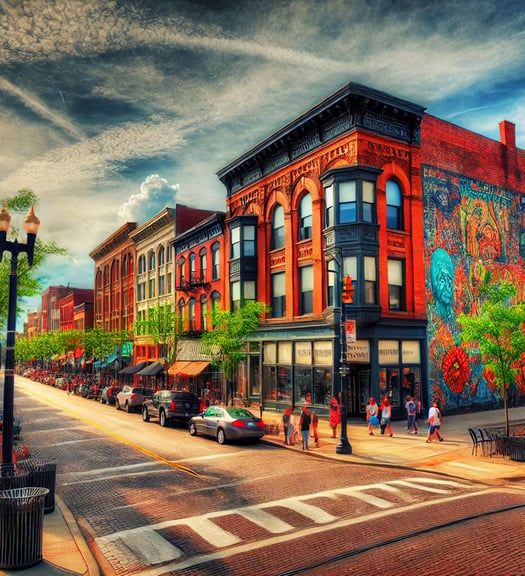

Emerging Neighborhoods with Investment Potential
Flipping and Renovation Opportunities
Flipping and renovating homes in Cleveland can be a profitable venture, especially in neighborhoods that are experiencing revitalization. Areas like Glenville, Clark-Fulton, and Slavic Village offer lower entry costs, making them ideal for investors looking to purchase properties that can be renovated and sold at a higher price.
The profitability of flipping in Cleveland is driven by the city’s relatively low property prices and the potential for significant value appreciation in revitalizing neighborhoods. Investors who can identify properties in need of renovation and navigate the local market can achieve substantial returns on investment.
Key areas where flipping is most lucrative include neighborhoods close to downtown, where demand for housing is high and property values are on the rise. As Cleveland continues to invest in urban development, these areas are likely to see continued growth, making them attractive targets for real estate investors looking to flip properties.


Projected Housing Market Trends for the Next Decade
Looking ahead, Cleveland’s housing market is expected to continue its upward trajectory, with steady price increases projected over the next decade. As the city’s economy grows and more people move to the area, demand for housing is likely to remain strong, particularly in neighborhoods that are undergoing revitalization.
However, investors should be mindful of potential challenges, such as rising interest rates and economic fluctuations, which could impact the affordability of housing. Despite these challenges, the overall outlook for Cleveland’s housing market remains positive, with opportunities for growth in both residential and rental markets.
For investors, the key to success in Cleveland’s real estate market will be staying informed about local trends and being prepared to act quickly when opportunities arise. By focusing on neighborhoods with strong growth potential and understanding the factors driving the market, investors can position themselves to take advantage of the ongoing development in Cleveland.
Projected Housing Market Trends in Cleveland
Impact of Economic Factors on the Housing Market
Cleveland’s housing market is closely tied to the city’s economic performance. As Cleveland continues to diversify its economy, particularly in sectors like healthcare, education, and technology, these industries are likely to drive demand for housing. Job growth in these areas is attracting new residents to the city, further fueling demand for both residential and rental properties.
Demographic changes, such as the influx of young professionals and families, are also influencing the housing market. These groups are particularly interested in neighborhoods that offer a mix of urban amenities and affordable housing, making areas like Ohio City and Tremont increasingly popular.
Overall, Cleveland’s economic shifts are creating a favorable environment for real estate investment. As the city continues to grow and attract new residents, the demand for housing is likely to remain strong, providing opportunities for both buyers and investors.




Projected Housing Market Trends in Suburban Cleveland
Looking ahead, the housing market in Cleveland’s suburbs is expected to continue its upward trajectory, with prices likely to rise further as demand remains strong. Ongoing development projects, including new residential and commercial developments, are expected to attract more residents to these areas, further driving up property values.
However, this trend also presents challenges for homebuyers, particularly those entering the market for the first time. As prices increase, affordability may become a growing concern, especially in high-demand suburbs like Shaker Heights, Lakewood, and Solon. Buyers will need to carefully consider their options and potentially look to emerging neighborhoods or those undergoing revitalization to find more affordable housing.
Projected Housing Market Trends in Suburban Cleveland
Challenges for Homebuyers
The rising prices in Cleveland’s suburbs present several challenges for homebuyers, particularly in terms of affordability. As demand continues to outpace supply in many areas, buyers may find themselves facing competitive bidding wars and higher-than-expected price tags. This can be particularly daunting for first-time buyers who may have limited budgets.
To navigate these challenges, homebuyers should consider working with a real estate agent who is knowledgeable about the local market and can provide insights into less competitive areas. Additionally, buyers may need to adjust their expectations, focusing on properties that offer potential for future appreciation, even if they require some initial investment in renovations or updates.
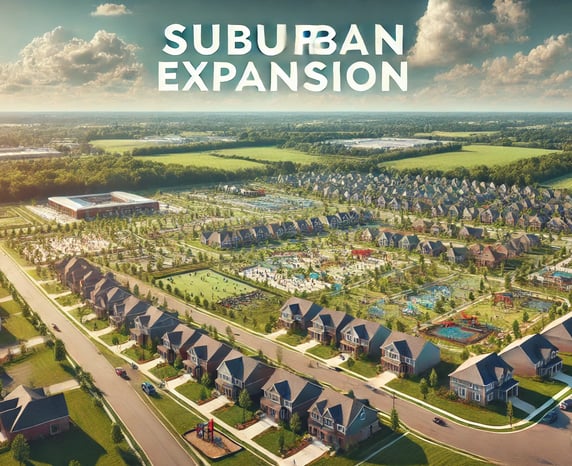



Cleveland’s housing market in 2024 presents a dynamic landscape with significant opportunities for buyers and investors. While the city remains relatively affordable, steady price increases and ongoing revitalization efforts are creating a competitive market. Whether you’re looking to buy, rent, or invest, Cleveland offers a range of options that cater to different needs and budgets. By staying informed about market trends and focusing on neighborhoods with strong growth potential, investors can take advantage of the opportunities that Cleveland’s real estate market has to offer.
Frequently asked questions
What are the best neighborhoods to invest in Cleveland in 2024? Ohio City, Tremont, and Detroit-Shoreway are among the best neighborhoods for investment in 2024, thanks to ongoing revitalization efforts and rising property values.
Is Cleveland’s housing market expected to remain affordable? While Cleveland remains more affordable than many other U.S. cities, steady price increases are expected to continue, particularly in high-demand neighborhoods.
How does Cleveland compare to other Rust Belt cities in terms of real estate investment? Cleveland offers a more affordable entry point for real estate investment compared to other Rust Belt cities like Pittsburgh or Detroit, with significant opportunities for growth in revitalizing neighborhoods.
Related Posts







